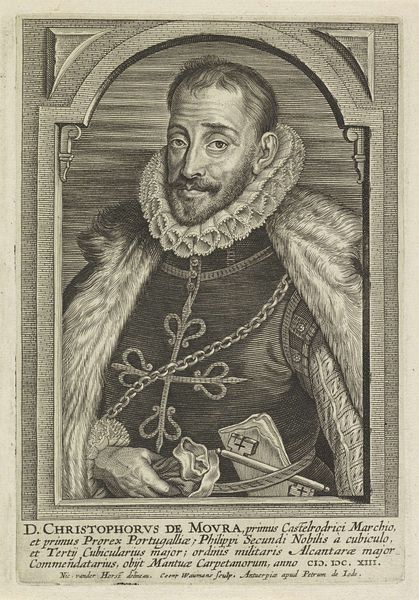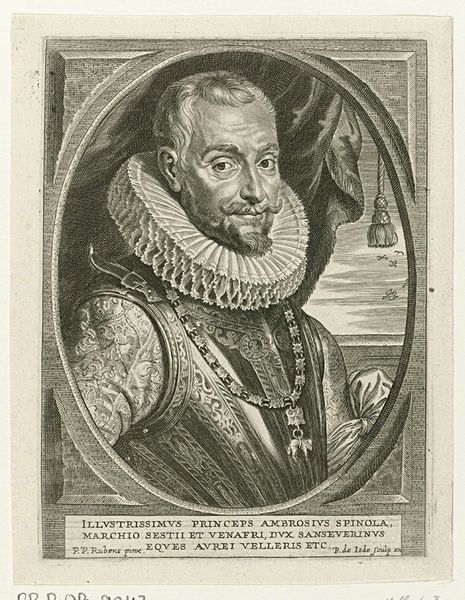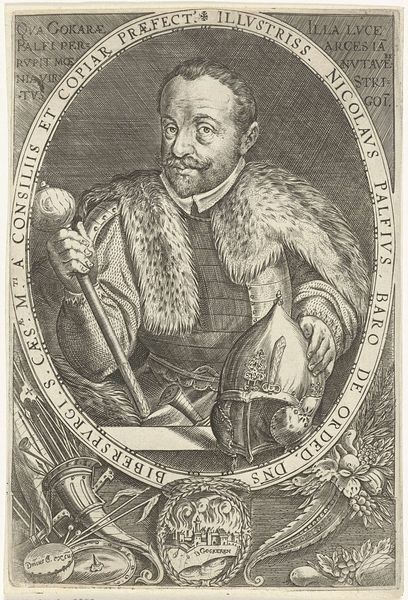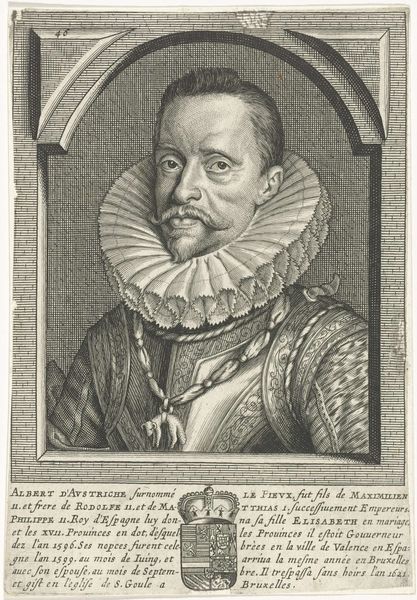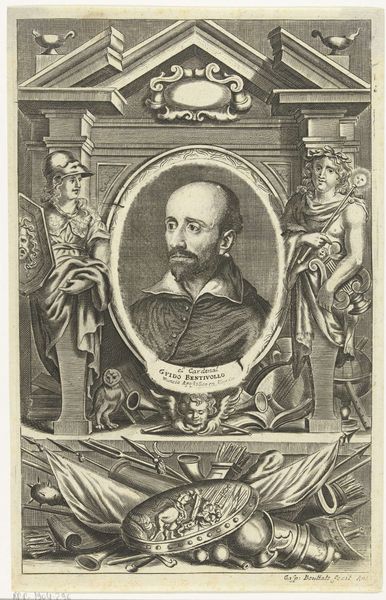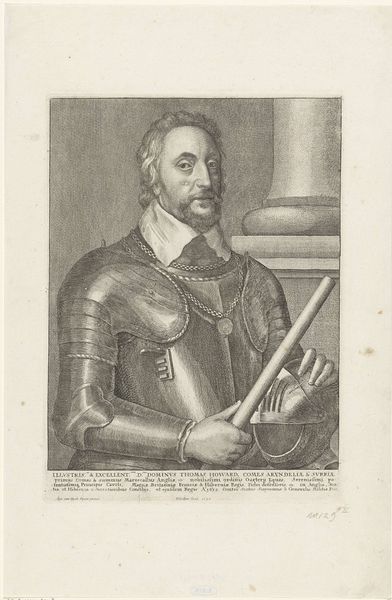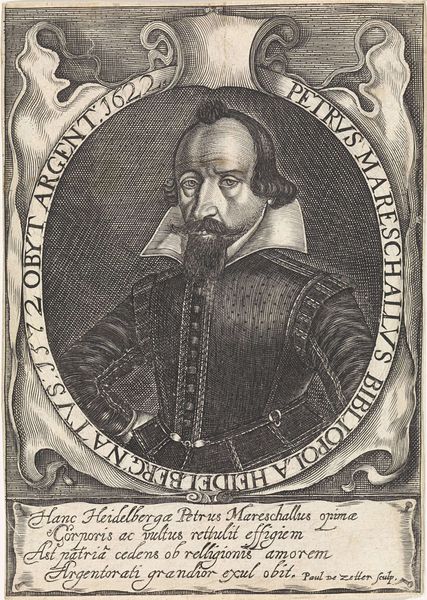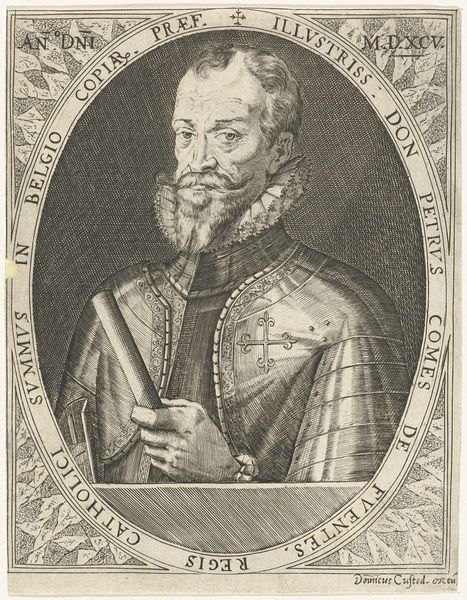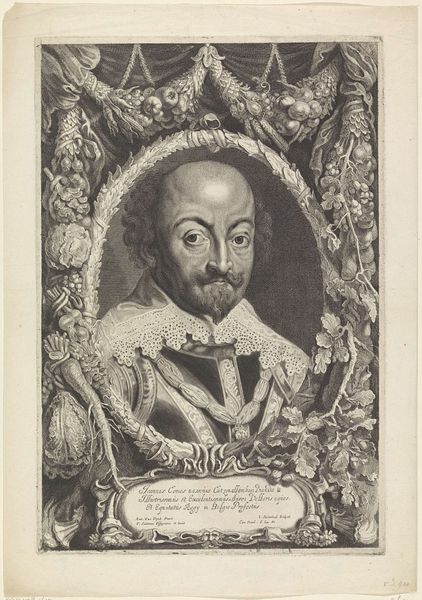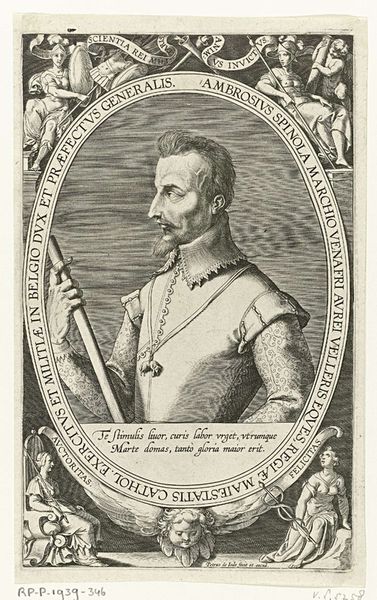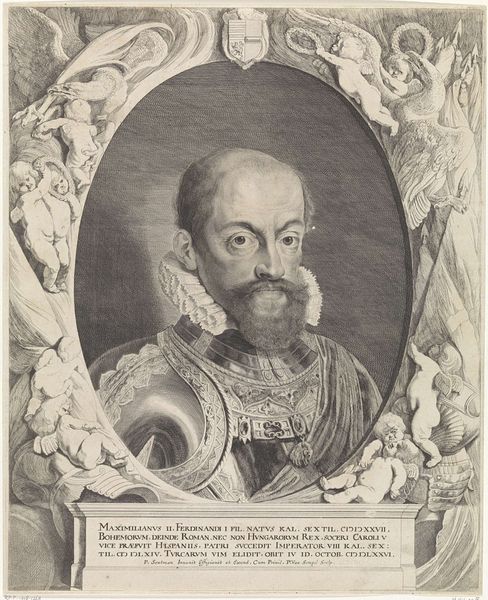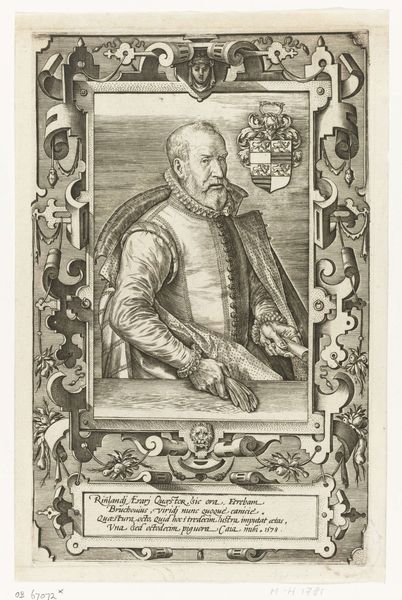
metal, engraving
#
portrait
#
baroque
#
metal
#
caricature
#
portrait drawing
#
history-painting
#
engraving
Dimensions: height 181 mm, width 126 mm
Copyright: Rijks Museum: Open Domain
Curator: Here we have an engraving, likely from between 1628 and 1670, portraying Philibert de Rye. Though made anonymously, it resides here in the Rijksmuseum. Editor: My immediate impression is the sheer rigidity of the composition. He's practically encased, not just in armor but also in this very formal frame with symbolic adornments. Curator: The armor certainly signifies power, and moreover protection, appropriate for Philibert de Rye, who held significant military and administrative positions. It would be interesting to research whether this specific style of armor indicates allegiance, class, and the evolution of gender and status during the baroque period. Editor: Look at the baton he holds, not casually, but deliberately. That shape carries so much historical weight - an emblem of authority extending back through centuries. Also, the elaborate crest beneath— a visual declaration of lineage and privilege. Do you see a bird, possibly an eagle with a crown over it, sitting above crossed cannons. Fascinating choice of symbols that reflect back on the subject's attributes. Curator: Agreed. It emphasizes his military prowess within a system upholding aristocratic values, which naturally provokes me to reflect on the ethics of its colonial implications and its impact on social equality and class divides across present contexts. I can't help but notice how such idealized depictions omit any nuanced perspectives. Editor: Perhaps, but consider the enduring nature of symbols—they are not static but are constantly reinterpreted, revealing cultural anxieties and aspirations across time. Take for instance, the scallop shell at the top. Its meaning in various belief systems adds a subtle layer of sacredness. Curator: True, yet its symbolism then, tied explicitly to power structures that enforced social norms which now provoke examination. I am reminded of critical theory—how images work ideologically. This piece should invite inquiry rather than veneration. Editor: And by understanding their visual lexicon we engage with our history with a perspective informed by collective psychology, ensuring dialogue across generations. Curator: Well said. Ultimately, it makes one rethink how these kinds of artworks from the past are presented and received today. Editor: Yes, it is always important to question and be ready to receive new ideas or change old perceptions about symbols.
Comments
No comments
Be the first to comment and join the conversation on the ultimate creative platform.
